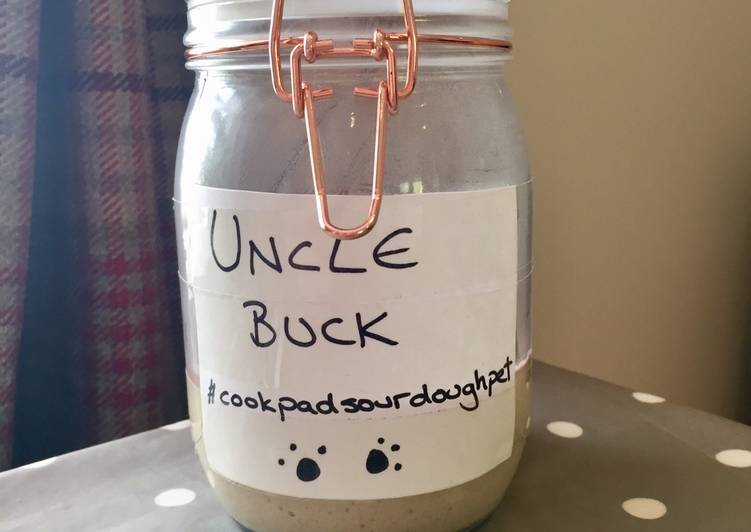Buckwheat Sourdough Starter. This Buckwheat Sourdough starter is a gluten-free sourdough starter that tastes just as great as its wheat-containing brethren! Using a buckwheat sourdough starter gives you a nutritious as well as tasty way to make gluten-free breads, pancakes, crepes, cornbread, waffles, tortillas, and many other treats. I was in Zell am See(a village in the Alps) in Austria this weekend and therefore I haven't had time to make a new post until now.
Share some people, cooking is indeed something which is quite simple. Besides they are indeed like cooking and have will cooking that is very good, they are also creative in processing each dish so that it becomes dish luscious. But there are those who cannot skillfully cook, so they must learn and see recipes that are simple to follow.
 Brown rice flour or buckwheat flour (or a combo of both).
It is best to use organic if possible.
Don't use a bad-smelling or moldy starter… if it's gone bad, then you have to throw it away and start over. (Note: for some reason my buckwheat sourdough always turns a bit pink-ish, but other flours don't.) Sourdough Feeding: Gluten free sourdough starter isn't as bubbly as wheat sourdough.
Brown rice flour or buckwheat flour (or a combo of both).
It is best to use organic if possible.
Don't use a bad-smelling or moldy starter… if it's gone bad, then you have to throw it away and start over. (Note: for some reason my buckwheat sourdough always turns a bit pink-ish, but other flours don't.) Sourdough Feeding: Gluten free sourdough starter isn't as bubbly as wheat sourdough.
You can make Buckwheat Sourdough Starter use 3 ingredients and 6 the steps. Here guides how you make it.
The main ingredient Buckwheat Sourdough Starter as follows:
- You need 35 gm of raisins.
- Prepare 365 ml of boiling water.
- Prepare 385 gm of buckwheat flour.
Combine the sourdough starter, buckwheat flour and water in a medium, cover and leave to rest at room temperature. At first, it'll be shaggy, but it will become increasingly taut. The deep dark fissures and a slight gray cast are a prelude to what this bread is all about. A touch of sweetness, slightly sour, earthy, and creamy—a concert of flavors and textures in this sprouted buckwheat sourdough.
Steps Buckwheat Sourdough Starter
- DAY 1 - Soak the raisins in the boiling water, leave them to soak until the water has cooled until it is tepid (just above room temp is fine). Then strain the raisins out of the water..
- In a glass bowl or large jar (I used a large bowl), place 40g of buckwheat flour and 80mls of your tepid raisin water and mix to form a paste. Cover with cling film and leave in a warm spot for 24 hours. Reserve your raisin water for day 2..
- DAY 2 - Whisk in another 40 g of the buckwheat flour and 55mls of your raisin water (warm it very slightly if you can for max yeast growth oomph). Cover again and leave for 24 hours..
- DAY 3 - Whisk in a further 75g buckwheat flour and 115 ml of your raisin water. Cover and leave to ferment for a further 24 hours..
- DAY 4 - Hopefully today you will start to notice a mild vinegar like smell and you may see some large surface bubbles. Discard half your mixture (don't throw it out - you can make pancakes, crackers and even cookies with this discarded batter). Then whisk 75g buckwheat flour and 115 ml of raisin water to your starter. Cover and leave to ferment for 24 hours..
- DAY 5 - Whisk in your remaining 155g of flour and add 225 ml of regular tepid water. Cover loosely and set aside for 4 hours of until really bubbly. Then store in the fridge for a final 12 hours before using..
This bread is a perfect companion for the cold days ahead. Crust Buckwheat has a very unique flavour and aroma and is a great addition to add depth to your baking. Unfortunately, buckwheat flour does not form gluten so baking with it can be a challenge. Scalding the buckwheat flour before adding it to the dough allows you to add a much higher percentage of buckwheat to the loaf while still getting a nice. When not being used, your starter will need to be maintained.